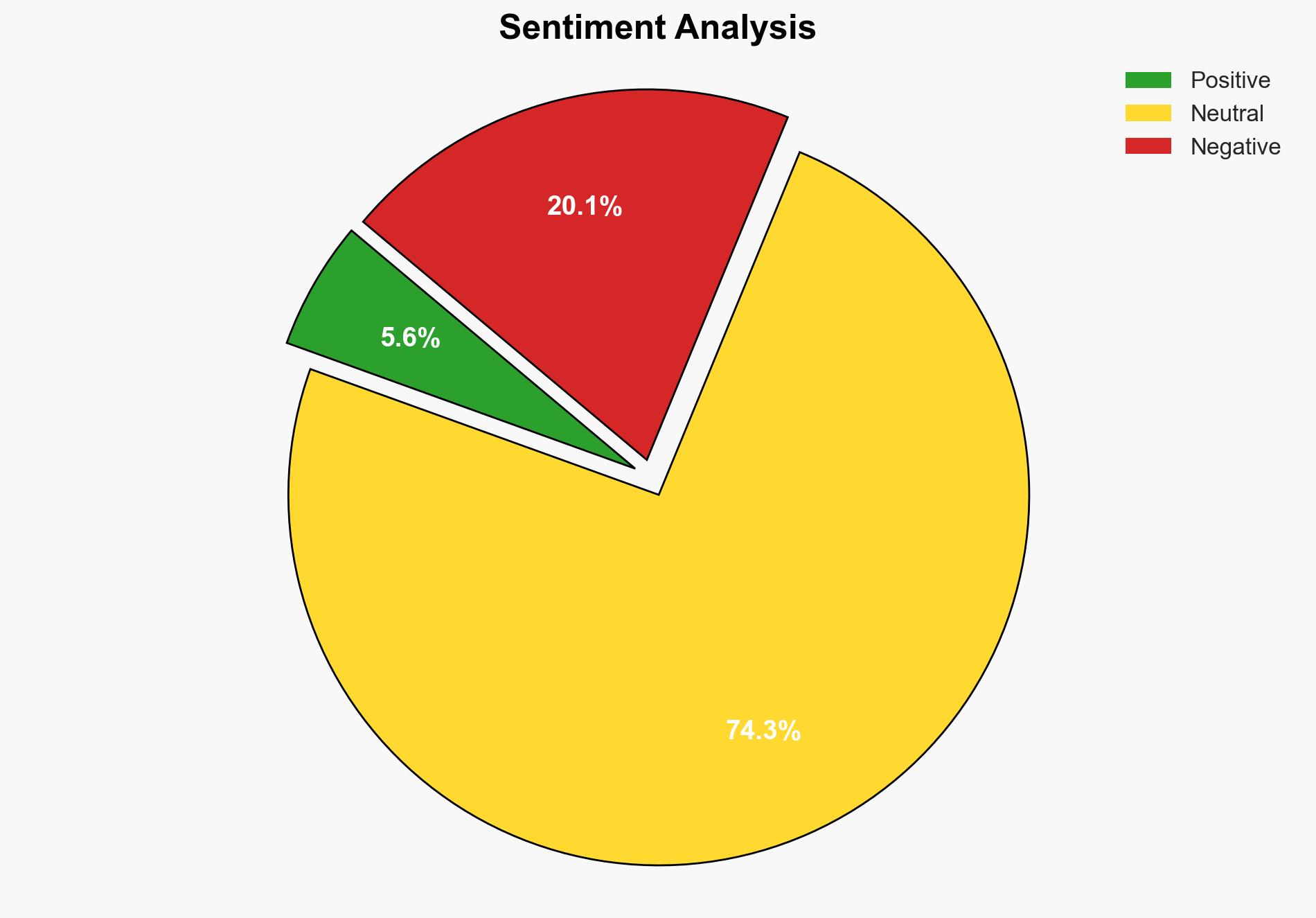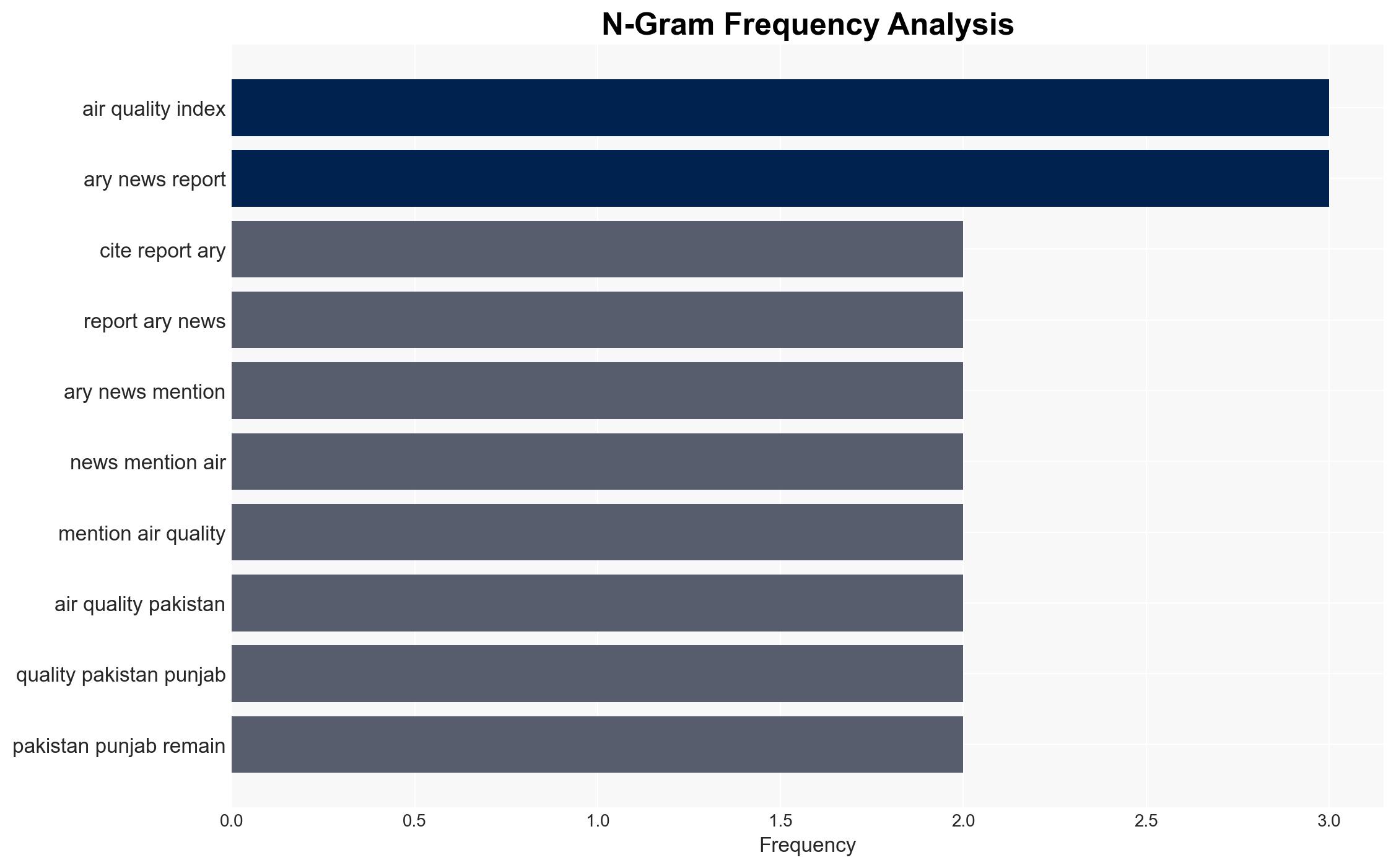Pakistan Lahore ranked second most polluted city in world – The Times of India
Published on: 2025-11-16
AI-powered OSINT brief from verified open sources. Automated NLP signal extraction with human verification. See our Methodology and Why WorldWideWatchers.
Intelligence Report:
1. BLUF (Bottom Line Up Front)
With a high confidence level, the most supported hypothesis is that Lahore’s severe air pollution is primarily due to a combination of industrial emissions, vehicular pollution, and agricultural practices, exacerbated by inadequate regulatory enforcement and urban planning. Immediate strategic actions should focus on enhancing regulatory frameworks, promoting green infrastructure, and implementing public awareness campaigns to mitigate health risks and environmental degradation.
2. Competing Hypotheses
Hypothesis 1: Lahore’s air pollution is predominantly caused by industrial emissions and vehicular pollution, compounded by weak regulatory enforcement and urban planning failures.
Hypothesis 2: The primary driver of Lahore’s air pollution is agricultural burning and seasonal climatic conditions, with industrial and vehicular emissions playing a secondary role.
Hypothesis 1 is more likely due to the consistent mention of industrial activity, fossil fuel combustion, and urban development as significant contributors in multiple reports. The persistent nature of pollution beyond seasonal agricultural burning periods supports this hypothesis.
3. Key Assumptions and Red Flags
Assumptions: It is assumed that the data from ARY News and other sources accurately reflect the pollution levels and their sources. It is also assumed that government efforts to mitigate pollution are insufficient.
Red Flags: Potential bias in reporting could arise if sources have vested interests in downplaying industrial contributions. There is also a risk of underreporting the effectiveness of government interventions.
4. Implications and Strategic Risks
The ongoing air pollution crisis poses significant public health risks, potentially leading to increased healthcare costs and reduced workforce productivity. Politically, failure to address pollution could lead to public dissent and loss of trust in government. Economically, persistent pollution may deter foreign investment and tourism. Informationally, misinformation about pollution sources could hinder effective policy responses.
5. Recommendations and Outlook
- Actionable Steps: Strengthen environmental regulations and enforcement, invest in public transportation infrastructure, and launch public health campaigns to raise awareness about pollution risks and preventive measures.
- Best Scenario: Successful implementation of policies leads to a significant reduction in pollution levels, improved public health, and enhanced economic prospects.
- Worst Scenario: Continued inaction results in escalating health crises, economic downturns, and political instability.
- Most-likely Scenario: Incremental improvements in air quality due to partial policy implementation and increased public awareness, but significant challenges remain.
6. Key Individuals and Entities
Government environmental agencies, industrial sector leaders, and public health organizations are crucial stakeholders in addressing Lahore’s air pollution crisis.
7. Thematic Tags
Regional Focus, Regional Focus: South Asia, Environmental Policy, Public Health, Urban Planning
Structured Analytic Techniques Applied
- Causal Layered Analysis (CLA): Analyze events across surface happenings, systems, worldviews, and myths.
- Cross-Impact Simulation: Model ripple effects across neighboring states, conflicts, or economic dependencies.
- Scenario Generation: Explore divergent futures under varying assumptions to identify plausible paths.
Explore more:
Regional Focus Briefs ·
Daily Summary ·
Support us
·





